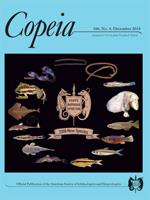Understanding how environmental factors influence various aspects of freshwater turtle health remains an important yet understudied topic within the context of individual–environment interactions. This is particularly true of host-associated bacterial microbiota, which are being increasingly recognized as a significant and understudied topic in the context of individual turtle health. While this area of work has expanded in certain areas, research efforts remain limited with regard to host–microbiota interactions in the context of habitat contaminants. Specifically, the commonly used herbicide, glyphosate, is of interest due to its massive worldwide use and known effects on various organisms. Effects of captivity on host-associated microbial community structure also remain largely unknown in various non-model organisms. To address these unknown effects of Roundup® and captivity on host-associated microbiomes, we examined the effects of low-level Roundup® exposure and captivity on the cloacal microbiota of the False Map Turtle, Graptemys pseudogeographica. We determined the effect of glyphosate by taking cloacal swabs pre- (0 h) and post-exposure (72 h) and examined microbial community beta- and alpha-diversity through 16S rRNA gene high-throughput sequencing. The results of this study indicate that low-level, short-term glyphosate exposure does not significantly alter the microbiota structure of G. pseudogeographica. However, there was a significant decrease in microbial community beta-diversity over time, confirming a trend that has been observed to a limited extent in other non-model organisms when put in laboratory conditions. These results are useful in understanding the baseline cloaca microbial community structure of G. pseudogeographica, as well as the implications and limitations of laboratory-based microbiota studies. Furthermore, this work suggests that low-level and short-term glyphosate exposure does not have a significant effect on the cloacal microbial community structure in wild-caught G. pseudogeographica.
BioOne.org will be down briefly for maintenance on 17 December 2024 between 18:00-22:00 Pacific Time US. We apologize for any inconvenience.
How to translate text using browser tools
18 October 2018
Bacterial Microbiota Response in Graptemys pseudogeographica to Captivity and Roundup® Exposure
Joseph D. Madison,
Shaylyn Austin,
Drew R. Davis,
Jacob L. Kerby
ACCESS THE FULL ARTICLE





